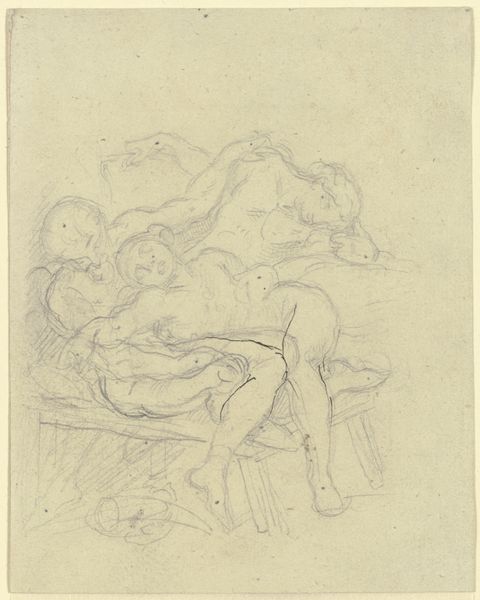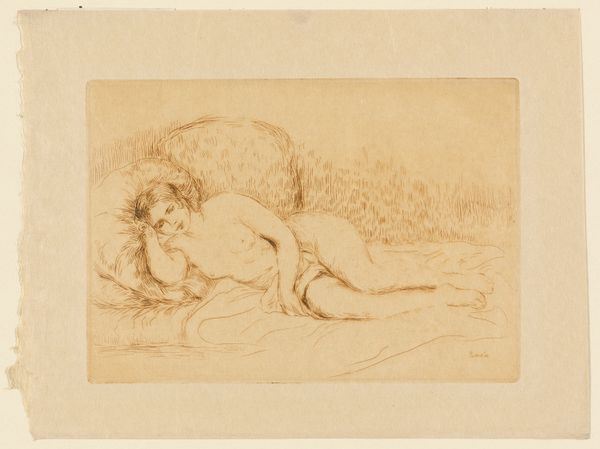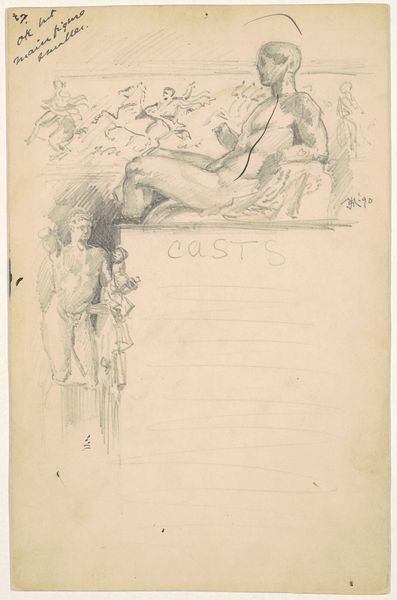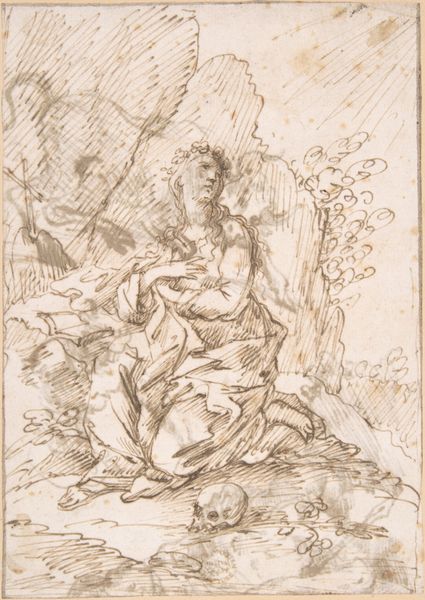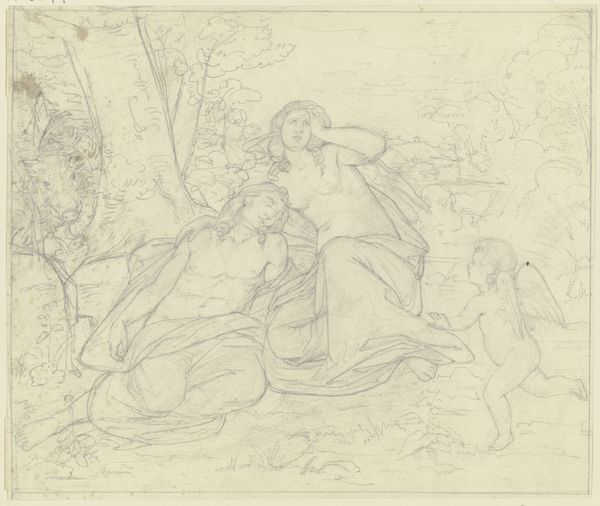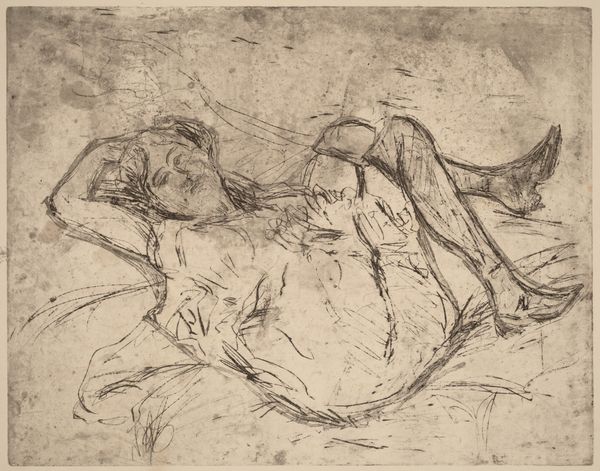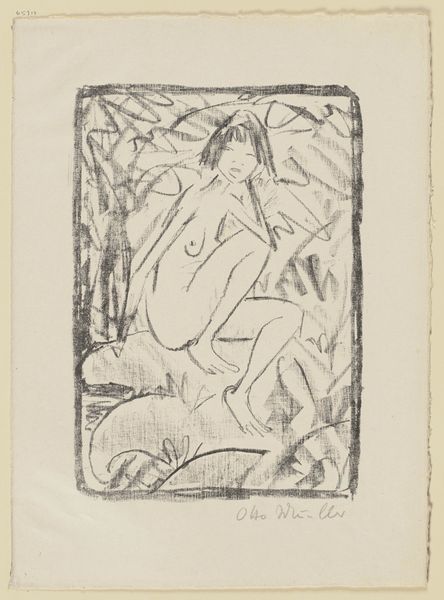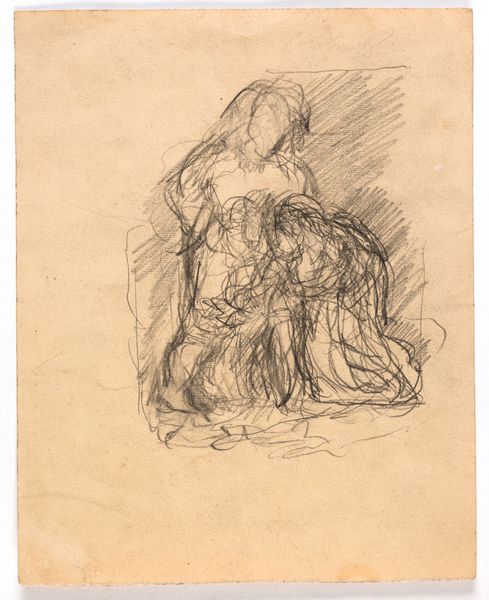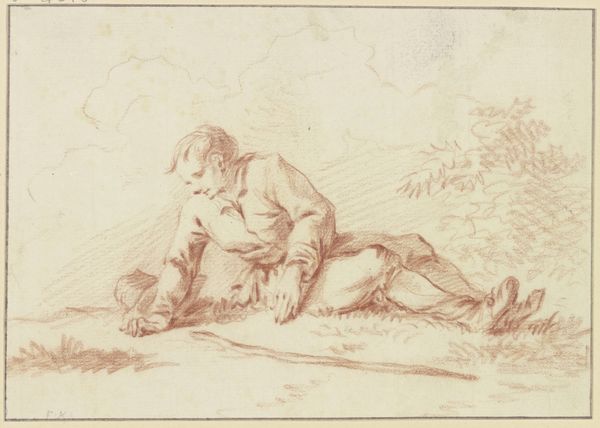
drawing, pencil, charcoal
#
portrait
#
drawing
#
16_19th-century
#
landscape
#
figuration
#
romanticism
#
pencil
#
charcoal
Copyright: Public Domain
Curator: What strikes me most is the overwhelming feeling of isolation. He's swallowed up by the landscape. Editor: Yes, it's palpable. And that is precisely what Neher captures in "Der einsame Werther in der Natur," a work rendering a poignant scene from Goethe’s "The Sorrows of Young Werther." Executed using pencil and charcoal, the drawing evokes Romanticism's fascination with feeling. Curator: The figure seems almost to dissolve into the earth, echoing the protagonist's internal state, almost a spiritual absorption. He's not just sitting in nature; he's becoming part of it. I'm seeing themes of longing and the pain of unrequited love so intrinsic to the narrative. Editor: Exactly! Goethe's "Werther" fueled an actual "Werther fever," prompting emotional identification, particularly amongst the young. This image allows viewers to engage in that collective romantic experience, reliving or reconsidering a key moment in literary history. Its dissemination allowed even wider social resonance and visibility for those feelings, especially concerning sentimentality and subjectivity in how art represents real emotional experiences. Curator: Looking closely, I see how Werther seems cradled by this somewhat melancholic configuration of rocks and twisted tree limbs. There's a definite pre-occupation with nature, echoing earlier, similar imagery and motifs relating to the role of nature as an emotional receptacle in other art periods. Editor: His placement also raises questions about spectatorship in this era: consider how the work navigates public emotion, the institution's responsibility in dealing with emotional images, and its intended viewership during production and within the framework of our own viewing habits in modern museum spaces. Curator: This image presents a very familiar feeling that transcends epochs—Neher created not just a period piece, but a piece about timeless emotional states, echoed through symbolic forms of nature. Editor: An evocative demonstration, isn’t it, of art’s enduring ability to portray the complicated and socially conscious human experience across history.
Comments
No comments
Be the first to comment and join the conversation on the ultimate creative platform.

